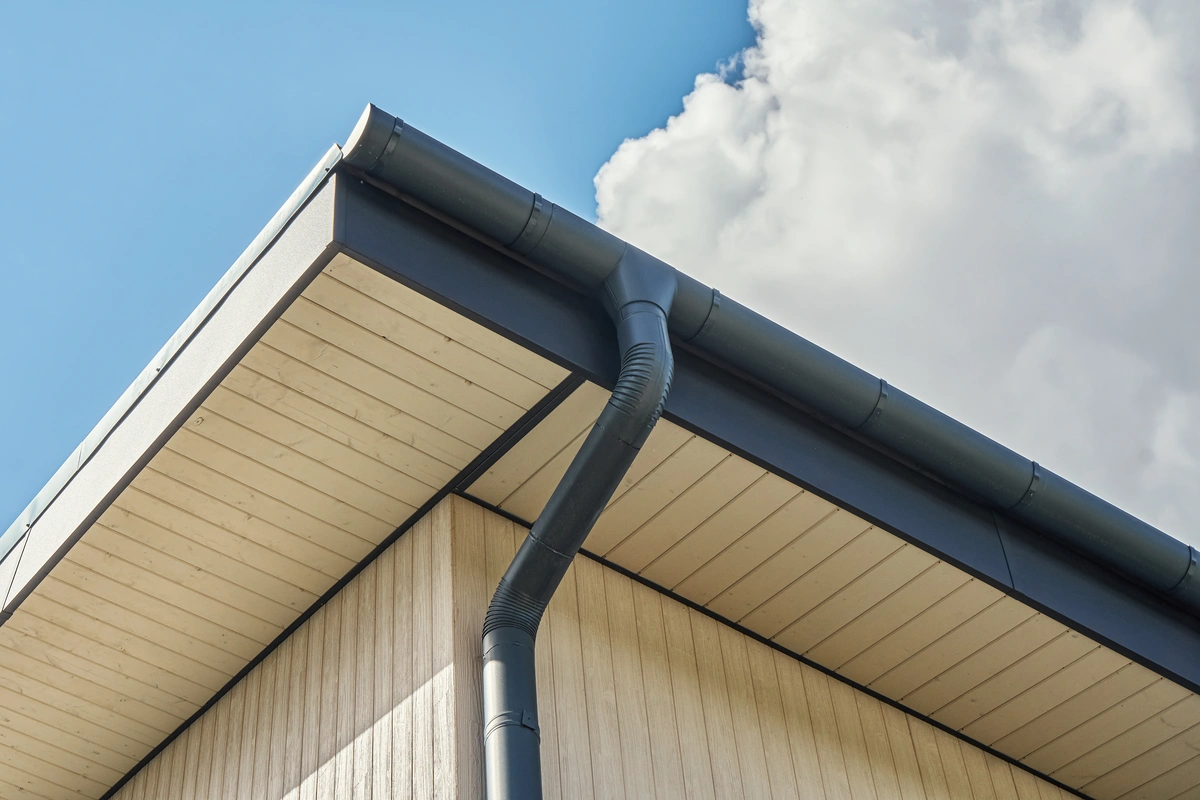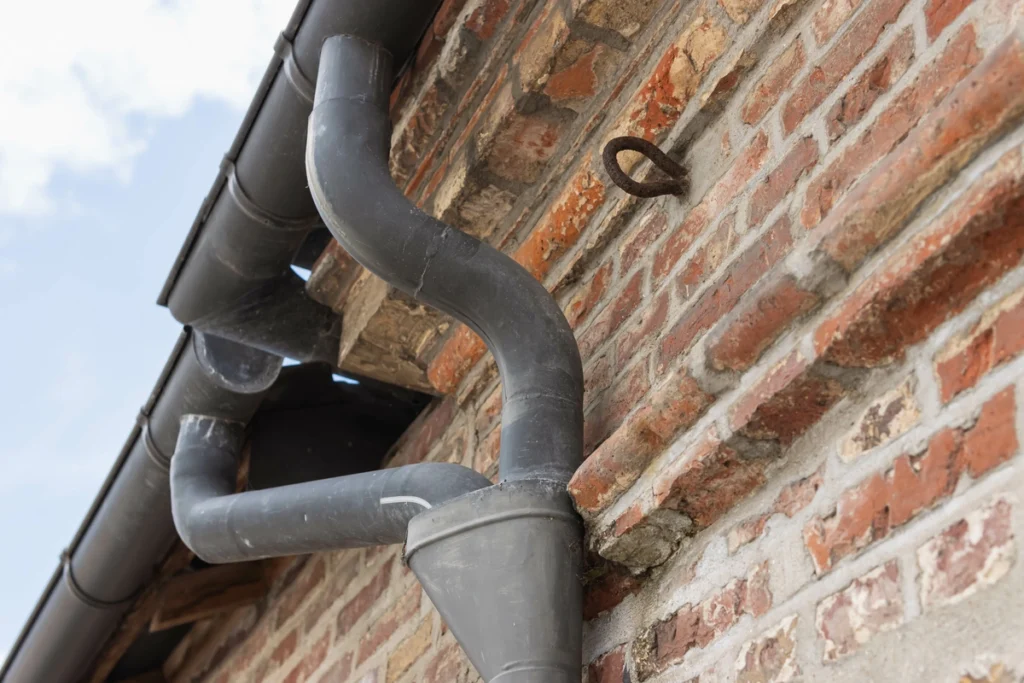
Blog
Homeowner’s Guide to Roof Drainage Systems
When it comes to safeguarding your home from the elements, one crucial component often overlooked is the roof drainage system. Outside of a rain storm, you may not think much about your gutters on a day-to-day basis. However, these systems play a pivotal role in channeling rainwater away from your roof and foundation, preventing water damage that can lead to costly repairs.
In this blog post, we’ll help you understand:
- What roof drainage systems are
- The different styles available
- The dangers of having a faulty drainage system
- How to effectively maintain your system to ensure its longevity
If you’re looking for roof drains that keep your residential roof in the best shape possible without needing a costly roof repair with every change of season, keep reading!
Understanding Roof Drainage Systems

Roof drainage systems, also known as gutter systems, are designed to collect and divert rainwater away from your roof and the foundation of your home. The primary components of a typical roof drainage system include:
- Gutters
- Downspouts
- Leaf guards
- Splash blocks
4 Different Styles of Roof Drainage Systems
When it comes to installing gutters on your roofing system, not all drains are created equal. Here are 4 of the most popular gutter styles available on the market.
1) Traditional Gutters
These are the most common and recognizable types of gutter systems. They come in various materials, such as aluminum, vinyl, and galvanized steel. Traditional gutters are typically attached along the eaves of your roof and have a distinct open-top design to catch and channel rainwater.
2) Seamless Gutters
Seamless gutters are custom-made for your home, as they are measured and cut on-site to fit the exact dimensions of your roof. This eliminates the need for multiple sections joined by seams, reducing the risk of leaks. They are often made of aluminum and are an excellent choice for minimizing maintenance.
3) Half-Round Gutters
Half-round gutters have a semicircular shape and are usually made of metal or copper. They are favored for their aesthetic appeal and ability to handle heavy rainfall effectively. Half-round gutters are often found on historic or high-end homes.
4) K-Style Gutters
K-style gutters are the most popular choice for modern homes. They have a flat bottom and a decorative shape resembling the letter “K.” K-style gutters are available in various materials, making them versatile and adaptable to different architectural styles.
The Dangers of a Faulty Drainage System

A faulty roof drainage system can lead to a host of problems for your home. Here are some of the dangers associated with a poorly maintained or malfunctioning system:
- Water Damage: When rainwater is not efficiently diverted away from your roof and foundation, it can seep into your home, causing damage to ceilings, walls, and floors. Prolonged exposure to moisture can also lead to mold growth, which can pose health risks to your family.
- Foundation Issues: Excess water pooling around your home’s foundation can lead to soil erosion and, over time, compromise the structural integrity of your foundation. This can result in costly foundation repairs.
- Landscaping Damage: A faulty drainage system can wreak havoc on your landscaping. Erosion, soil displacement, and plant damage are common consequences of poor drainage.
- Pest Infestations: Stagnant water in clogged gutters provides an ideal breeding ground for pests, such as mosquitoes and termites. These pests can then find their way into your home, causing further problems.
Maintaining Your Roof Drainage System
Now that we’ve highlighted the importance of a well-functioning roof drainage system and the dangers of neglecting it, let’s discuss how to maintain your system to keep it in top shape:
- Regular Cleaning: The most crucial aspect of maintenance is keeping your gutters and downspouts clear of debris. Leaves, twigs, and other debris can clog your system, leading to overflow and potential damage. Plan to clean your gutters at least twice a year, ideally in the spring and fall.
- Install Leaf Guards: Consider installing leaf guards or gutter screens to minimize debris buildup. These devices can help prevent clogs and reduce the frequency of gutter cleaning.
- Check for Leaks: Inspect your gutter system for leaks or loose sections. If you notice any issues, address them promptly to prevent water from escaping where it shouldn’t.
- Downspout Maintenance: Ensure that your downspouts are directing water away from your home’s foundation. Use downspout extensions or splash blocks to redirect water at least 3-4 feet away from your foundation.
- Professional Inspection: Periodically, have your roof drainage system inspected by a professional. They can identify potential issues and make necessary repairs to keep your system functioning optimally.
Keep Your Roof Clear
Roof drainage systems are a vital but often overlooked part of your home’s protection against water damage. Choosing the right style of gutter system and maintaining it properly can save you from costly repairs down the road.
When it comes to the installation process, a trusted roofing contractor can help to make sure that everything is installed safely. This can help prevent standing water and other damage that can affect your roofing materials. Contact Avenue Roofing today to learn about your options!



